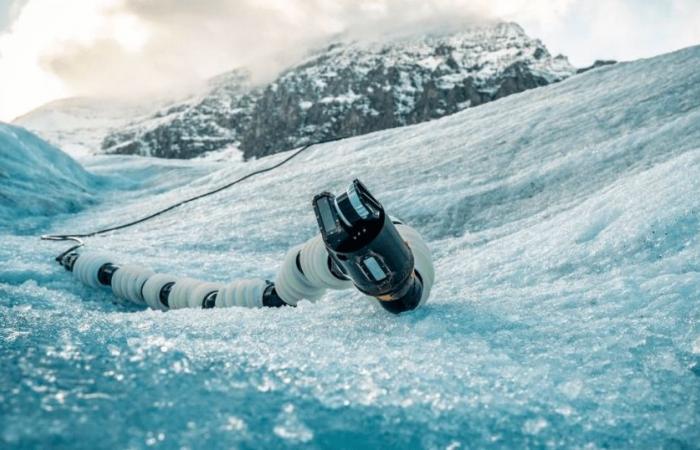
The snake robot with which NASA plans to investigate the moon of Saturn. Photo:
For four years, the POT has been working together with the Research laboratory Jet Propulsion Laboratory (JPL) in the development of a snake robot which has the ability to reach inaccessible places due to the way it was built.
In order to ensure that this mechanism can search for extraterrestrial life in the frozen oceans of Saturn, the Exobiology Extant Life Surveyor (ELLS) It has already started testing on Athabasca, a glacier located in the Canadian Rockies, obtaining positive results.
This is NASA’s new ‘snake robot’
He ELLS robot has been created with the main objective of analyzing Enceladusthe icy moon of saturn, since it has a structure that easily adapts to descents in vertical spaces. Weighing 100 kilos and measuring 4 meters long, the Exobiology Extant Life Surveyor makes movements similar to those of a snake when crawling, or rather, moving through narrow spaces.
Among its main features, the ELLS robot has a series of technological innovations that make it an unprecedented creation. It has a camera system in the robot’s head, accompanied by laser sensors that are capable of creating maps of its environment, making it an autonomous system without the need to be controlled by a human being.
The Exobiology Extant Life (ELLS) is structured with the union of a series of modules where scientific instruments can be integrated, facilitating research on the icy moon of Saturn. Finally, the robot created by the Jet Propulsion Laboratory has 48 motors that will allow it to adapt and analyze any type of terrain.
The ELLS robot from Jet Propulsion Laboratory together with NASA has already been tested on a glacier in Canada. Photo: La Nación
Projection with the ELLS robot
Once it can be proven that Exobilogy Extant Life is a safe robot to investigate difficult areas of space, NASA will send it via spacecraft. The US agency estimates that this could happen in the next 12 years. However, those in charge of its construction project that the “snake robot” could also be used to carry out missions on the Moon and parts of the Earth.
Hiro Ono, participant in the creation of the ELLS robot, points out that they will seek to set a precedent in terms of the construction of vehicles for research in space. “There are dozens of textbooks on how to design a four-wheeled vehicle, but there is no textbook on how to design an autonomous snake robot to boldly go where no robot has gone before,” he said.
The Exobiology Extant Life Surveyor (ELLS) robot is projected to reach Saturn in the next 12 years. Photo: La Nación
NASA’s monitoring of Saturn’s icy moon
The POT has investigated Enceladus, Saturn’s icy moon, due to its potential to host life. The Cassini mission, which orbited Saturn between 2004 and 2017, discovered that Enceladus has a global ocean beneath its icy crust. This is kept warm by hydrothermal activity on the seafloor, providing a potentially habitable environment similar to the conditions where it is thought life could have begun on Earth.
With the help of launching a satellite into space, Cassini detected molecular hydrogen in the “wifts” of water vapor originating from fractures at the south pole of Enceladus, signifying a source of chemical energy that could sustain the life of microorganisms.





